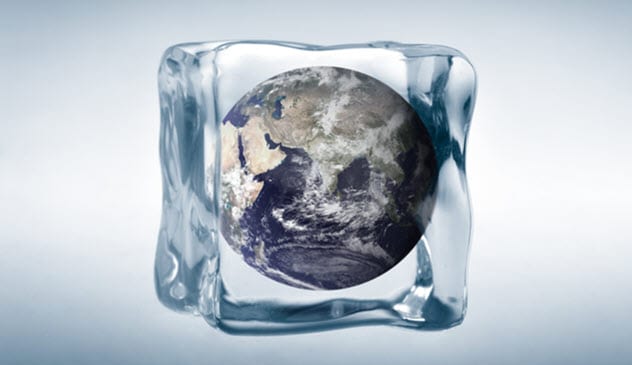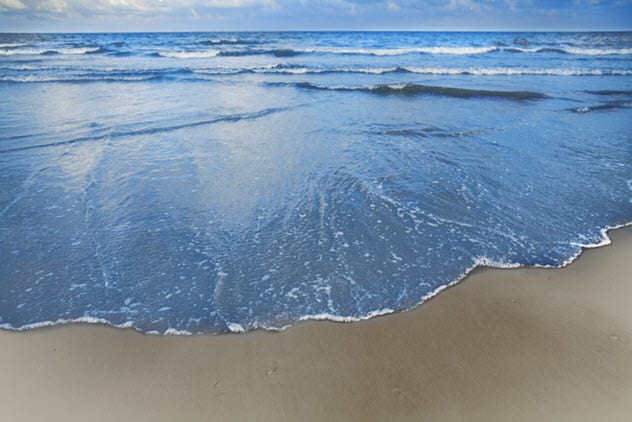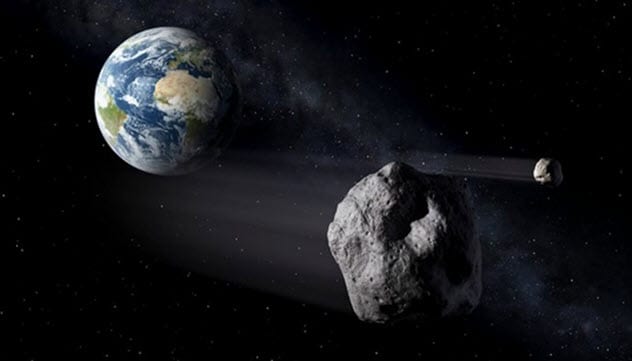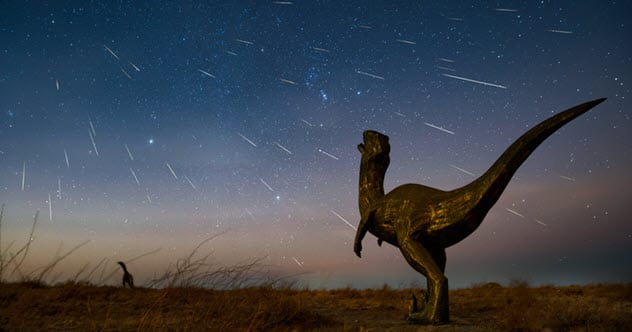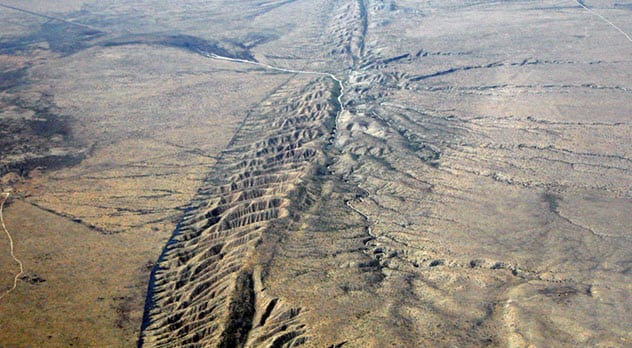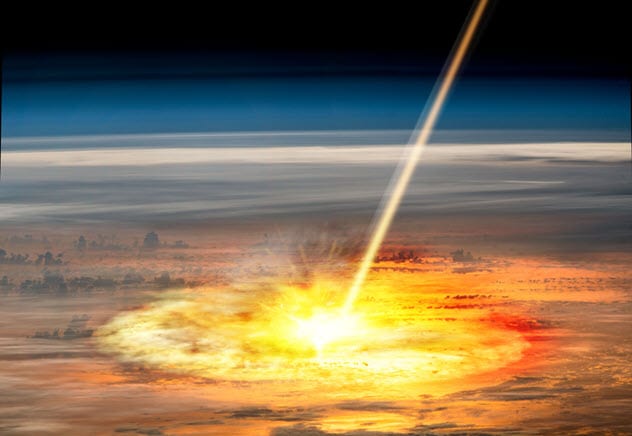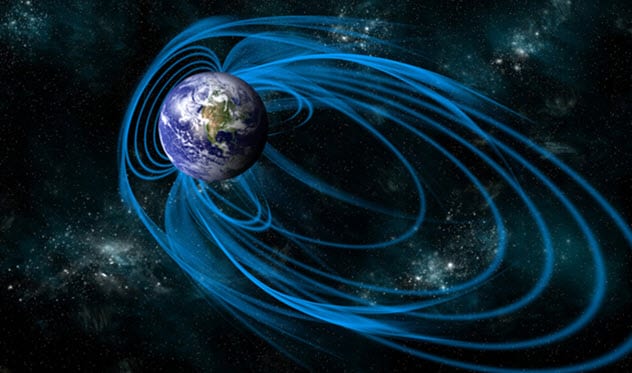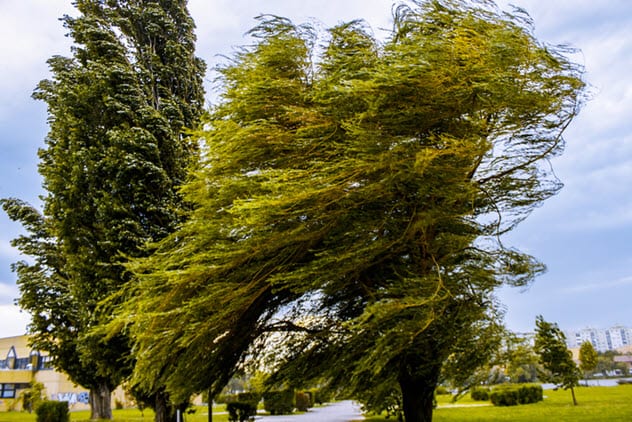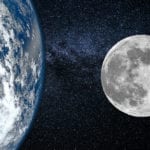The Moon has been an intrinsic part of human culture from its beginnings. Since the first humans began to make art in caves, the Moon was already a special element of their paintings. And it sure is still special for us today. As our closest cosmic companion, humans have shared millennia of evolution with the Moon in many ways. But we do not usually stop to think about what would happen if the Moon had never accompanied us. What if the Moon had never existed or if it disappeared today? Could we expect things on our planet to stay the same? In fact, we are about to see that everything that makes the Earth special could be lost in the absence of such a dusty rock orbiting us.
10 Earth’s Seasons Would Become Crazy
While the Earth revolves around the Sun, it also rotates on its own axis, which turns out to be tilted. Currently, the rotation axis of the Earth is inclined about 23.4 degrees, a value that does not change during the year. As a result, in a certain part of the year, the northern hemisphere is more oriented toward the Sun than the southern one is. Six months later, when the Earth is on the opposite side of its orbit around the Sun, the southern hemisphere is now the one facing toward the star. In this way, both hemispheres of the Earth receive different amounts of sunlight and heat according to the time of year in what we know as annual seasons. The reason why the Earth is tilted on its axis goes back to its formation 4.5 billion years ago. When the early version of the Earth collided with another planetary body, its rotation axis inclined drastically. Then, the attraction of the Moon stabilized this inclination to the current one, with small fluctuations over the span of millennia. So, what would happen if the Moon did not exist? Well, some experts believe that the Earth would tilt up to 85 degrees more than now. Others are more modest and assume that this inclination could be up to 20 degrees. Either way, the Earth’s axis would tilt so much that the poles would be exposed to the Sun, melting their ice caps and triggering extreme climatic shifts. In fact, a change of only one degree in the inclination of our planet’s axis is enough to cause ice ages.[1]
9 The Oceans Would Come Down
Among the best-known effects that the Moon produces on Earth are ocean tides. Together with the Sun, the Moon is responsible for increasing and decreasing the level of our seas several times a day. As the Moon revolves around the Earth, the former’s gravity pulls the oceans toward it and thus high tides are created. In essence, the closer the Moon is, the higher the tides. To get an idea of the power of the Moon over the oceans, the maximum height difference between low and high tides can be as much as 16 meters (52 ft). If the Moon were not there to cause this effect, ocean tides would be significantly reduced. There would still be tides because the gravitational force of the Sun also does its part over the Earth’s water, although its attraction is less than that of the Moon.[2] In short, the tides would be reduced to one-third of their current size and the oceans would become much calmer. The sea level would also be affected. Without the gravity of the Moon, the oceanic water would be redistributed uniformly across the entire surface of the Earth. Therefore, the sea level at the poles would increase drastically.
8 Say Goodbye To Any Other Moon
Earth’s gravitational pull influences the height at which our spacecraft orbit the planet. For this reason, some structures in low orbits—such as the International Space Station—must make periodic corrections in their course to avoid falling into Earth’s atmosphere. However, there are points in space with a perfect balance between the gravity of the Earth and that of the Moon. Anything within these points will remain relatively stationary with respect to both celestial bodies. Neither the Earth nor the Moon will be able to attract the object until it falls to any of their surfaces. These are the Lagrange points. In 2018, Hungarian astronomers discovered that at two of those points—L4 and L5—there are huge clouds of interplanetary dust orbiting Earth with a size up to nine times larger than our planet. In addition, another study states that Lagrange points could momentarily capture small asteroids, which become temporary “mini-moons” of the Earth before resuming their journeys.[3] If there were no Moon, the Lagrange points shared with Earth would also disappear. The dust clouds trapped there would just disperse, ultimately intersecting Earth or being blown away by the solar wind and the gravity of other planets. In the case of the asteroids, the lack of the Moon would make these objects keep crossing outer space in an unaltered trajectory until impacting with a larger body—perhaps our own world.
7 How About Much Shorter Days?
One of the things that makes our planet so habitable is its rotation time. Currently, Earth completes one revolution every 24 hours—specifically, 23 hours and 56 minutes. This allows the planet to have a pleasant climate for life because all its surface has enough time to warm and cool according to the moment. But this was not always the case. Scientists are now convinced that Earth’s days were much shorter millions of years ago. When the Earth and the Moon formed 4.5 billion years ago, the planet was spinning so fast that the day only lasted four hours.[4] During the time when dinosaurs roamed Earth, the day already lasted 23 hours. And on June 30, 2012, clocks around the world had to mark an extra second before 00:00 to keep pace with the longer days. The cause of this delay is nothing less than, you guessed it, the Moon. It happens that the gravity of the Moon exerts friction forces on the Earth itself and slows down the planet’s rotation two milliseconds every 100 years. As the Moon keeps moving away from Earth—at a current rate of 3.82 centimeters (1.5 in) per year—our world loses rotational energy and slows down its spin. If the Moon had not existed from the beginning, we could expect the days to be several hours shorter than they are today. If the Moon disappeared now, the days would remain almost unchanged at about 24 hours long. But if everything remains the same as it has been so far, the days will last 25 hours in about 180 million years.
6 Forget About Plate Tectonics
By this point, we are already clear that the Moon’s gravity exerts great effects on the natural processes of the Earth. For example, we saw that the Moon causes the ocean tides. But the Moon is so powerful over our world that it also produces tides on solid ground—something we know as Earth tides. Earth tides are fluctuations in the relative height of the Earth’s crust at a daily frequency similar to that of ocean tides. As the Moon constantly pulls the surface of the Earth, the ground beneath us can rise up to 30 centimeters (12 in) at a given time of day. This is due to the elasticity of the Earth’s crust, which has fissures that allow large landmasses—the tectonic plates—to move. Speaking of tectonic plates, what would happen to them if there were no Moon? It is believed that the Moon originated after the Earth lost much of its primordial crust during an interplanetary collision. If the Moon had never been formed, all that crust would have remained on Earth, filling in the gaps in which the oceans lie today.[5] The Earth would not have tectonic plates because there would be no space for them to move. In addition, the Earth’s surface would be made of a single piece, which would prevent the processes needed to form mountains. That is right. There would be no mountains on our planet except for some scattered volcanoes. Assuming there was still some ocean on Earth, the water would cover the entire surface of the planet. Some studies indicate that Earth tides are related to the occurrence of small earthquakes. There is a possibility that weak earthquakes occur when the stress in the crust caused by the attraction of the Moon is high. So, in the event that the Moon disappeared today and Earth tides were reduced considerably, so would the frequency of such tremors.
5 We’d Lose A Shield Against Unwanted Space Rocks
Today, we know that the Earth is bombarded by small meteoroids at a higher frequency than previously thought. The number of meteoric impacts on our planet has tripled during the last 290 million years to the point that 33 tons of space debris fall to Earth every day. Due to their size, most of these rocks burn completely in the Earth’s atmosphere. However, without the presence of the Moon, the impact rate could be much higher, making the Earth a fairly hostile place. The Moon is almost 3,500 kilometers (2,175 mi) in diameter—about 27 percent of the Earth’s diameter. Thanks to its large size, the Moon has served as a protection for Earth in times of cosmic adversity.[6] During the planet’s early days, the Moon attracted to itself a large part of the interplanetary debris and asteroids wandering in this area of the solar system. Had our natural companion not existed, the neighborhood of Earth would have been like a minefield too dangerous for the development of life. Even today, the Moon is still like a small shield that protects us from meteoric impacts. Studies show that the gravity of the Moon helps to prevent more asteroid collisions with the Earth than it causes. And how much is that? Well, just between 2005 and 2013, NASA detected more than 300 impacts on the lunar surface. This means that in the absence of the Moon, hundreds of such bodies could have ended up impacting us. So, in that sense, it is hard to imagine Earth without its Moon.
4 No More Moon, No More Gold
Gold, platinum, palladium, iridium. These metallic elements have proved extremely valuable to our civilization. We have used them in all kinds of inventions—from cars and spaceships to electronics and jewelry. But again, it is likely that we would not have such materials without the Moon. Why? To understand it, we must go a little deeper into the facts surrounding the formation of the Moon. About 4.5 billion years ago, a rock the size of Mars—which scientists have called Theia—hit squarely against the hot, molten surface of early Earth. Both the outer layer of Theia and part of the Earth’s mantle were ejected into space, agglomerating in Earth’s orbit to form the Moon. However, the core of Theia stayed here on Earth and the metals that composed Theia became part of our planet. If the Moon had never formed, the concentration of precious metals in the Earth’s mantle would be much lower. It happens that metals like gold and platinum tend to be attracted to iron. On a molten planet like the Earth was at first, these metals would have sunk until they reached the iron core. They would have been trapped there forever once the core began to cool. But thanks to the formation of the Moon after an interplanetary impact, abundant amounts of metallic elements were scattered in the Earth’s mantle. There they waited until seismic activity dragged them to the surface and to us.[7]
3 Earth’s Magnetic Bubble Would Be Switched Off Forever
Earth’s magnetic field (aka magnetosphere) is essential for the development of life on this planet. Such a magnetic bubble surrounds the Earth and constantly protects it from solar wind, a flow of charged particles that come from the Sun with the power to destroy our atmosphere. But the magnetosphere also protects us because it prevents life from being bombarded by harmful cosmic and solar radiation. The magnetosphere exists due to something known as the geodynamo, which is the rotary motion of the molten iron core of the Earth. Such a movement of the internal magnetic metals causes the magnetosphere to remain strong. This geodynamo exists thanks to the tidal forces that the Moon exerts on the Earth. As the Moon flattens and stretches the inner layers of the Earth with its gravitational force, enough energy is generated to keep the planet’s core hot and moving. If we did not have the Moon and its exchange of rotational energy, the Earth’s core would stop moving and then it would solidify. With the geodynamo lost, the magnetosphere of the planet would vanish, allowing the solar wind to devour the atmosphere completely. Without an atmosphere, every water reservoir on the Earth’s surface would evaporate and solar radiation would turn our world into a barren desert. In fact, this description can be perfectly applied to what happened with Mars. Having been like Earth once, Mars lost its magnetosphere 4.2 billion years ago, becoming the scorched, red rock it is today.[8]
2 Warning: Wild Weather
If there were no Moon, the weather patterns on Earth would go crazy. Of course, this assumes that the Earth still had an atmosphere. First, the destabilization of the Earth’s axis due to the lack of the Moon would cause extreme changes in global temperatures. As the poles would remain longer under the Sun’s heat, the surrounding oceans could reach a temperature of at least 47 degrees Celsius (116 °F). Meanwhile, the areas at the equator would suffer from glaciations. The phases of the Moon in the sky also affect the rainfall of a region. When the Moon is overhead, the atmospheric pressure and the air temperature increase, which translates into less rainfall for that place. If the Moon did not exist, we could expect more rain. But the effect caused by the Moon is so minimal that the increase in rainfall would be only 1 percent. In addition, we know that planets with a faster rotation also have stronger winds. For example, a day on Jupiter lasts about 10 hours and its winds are 160–320 kilometers per hour (100–200 mph). Meanwhile, Saturn completes a rotation in about 10.5 hours, having winds that can reach 1,800 kilometers per hour (1,118 mph). And as we discussed earlier, without the Moon, the Earth would rotate faster, with days that could essentially last several hours less. Under these conditions and despite the obvious differences between planets (such as Earth and Jupiter in terms of size and composition), the winds on our planet could reach 160 kilometers per hour (100 mph) on any day. Hurricanes would have even stronger winds with a greater destructive force.[9]
1 It Would Be A World Devoid Of Intelligent Life
Despite everything we’ve already discussed, we have not delved into the fact that complex life on Earth might not exist at all without a moon to take care of us. Without the Moon, the Earth would have been hit by a greater number of large asteroids and planetary bodies. Under this scenario, life would have had a hard time trying to exist, which means a lower probability that living beings would have become more complex over time. It is believed that the stabilization of the Earth’s axis provided by the Moon, combined with continental drift, allowed the emergence of many different ecosystems across the planet. These ecosystems, which were more complex than those at the time of the dinosaurs, contributed to the emergence of mammals and, ultimately, of humans. So, had the Moon never existed, beings like us would also have had a lower probability of coming into existence.[10] But it is possible that not even life as we know it would have appeared on Earth if the Moon had not helped. We know that life originated in the primordial oceans where molecules merged to form nucleic acids, the elementary building blocks of life. Without the gravitational pull of the Moon, there would not have been enough salt concentrations in the seawater for such life-making chemistry to have taken place. As the Moon controls tides on Earth and the tides transport the minerals needed for the subsistence of marine life, it is difficult to imagine life in the oceans without our natural satellite making it possible. It is also worth mentioning that without the Earth’s magnetosphere, for which the Moon is largely responsible, solar radiation would break down the oceans, erasing all chance of vital chemical processes arising there. That is why, when looking for habitable worlds in other regions of the galaxy, scientists focus on finding planets with large moons that allow the development of life. Brian is an economy student, graphic artist, science enthusiast, and founder of A Strange Place Called Knowledge. You can reach his site at https://strange-knowledge.com/.
